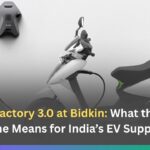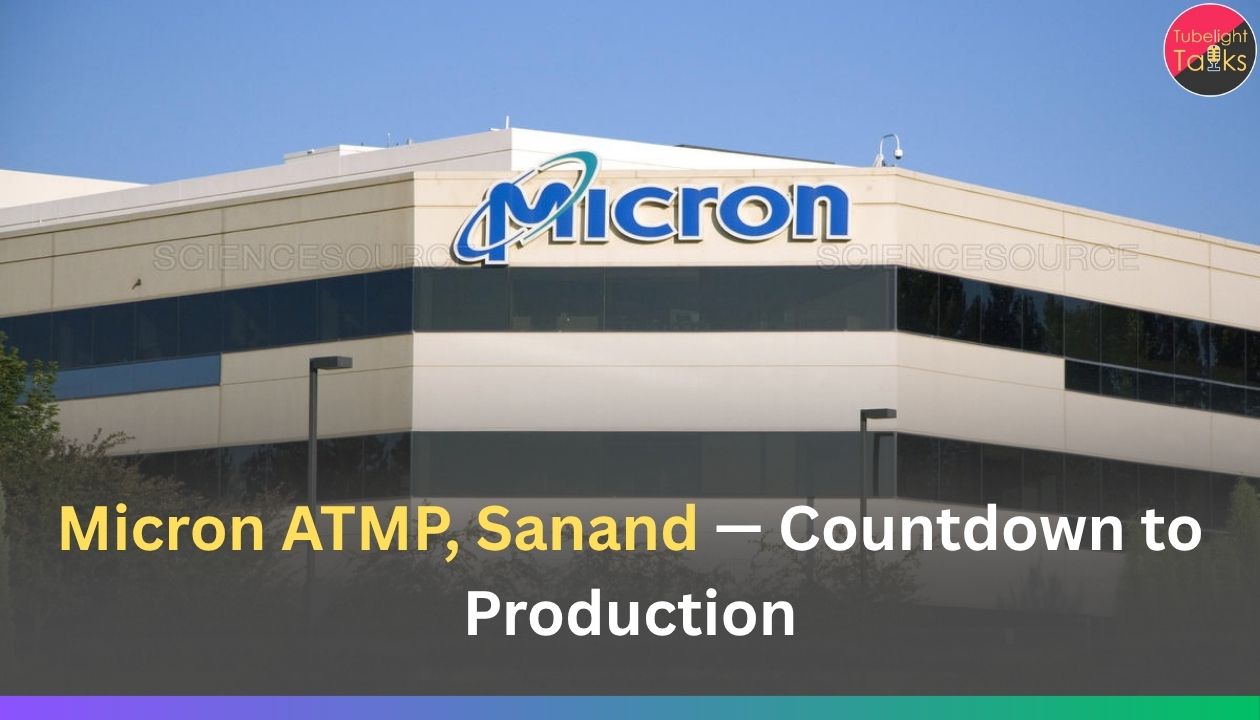Ather’s Factory 3.0 at Bidkin: Ather Energy has crossed the 5,00,000-unit production mark—rolled out at its Hosur plant with the family-focused Rizta as the growth driver—and is now building a third, Industry-4.0 factory at Bidkin (AURIC), Chhatrapati Sambhajinagar. The new “Factory 3.0,” to be constructed in two phases, is designed to lift installed capacity across sites to ~1.42 million scooters a year.
Beyond output, the move can catalyse a dense ring of magnet suppliers, motor and controller makers, die-casters, plastics, wiring harness, and charger vendors around the Delhi-Mumbai corridor. Here’s the milestone, the factory plan, why AURIC/Bidkin matters, and the 2026 watch-list.
The milestone: 5,00,000 and counting
Ather announced the 500,000th e-scooter (from Hosur, TN), with coverage confirming the landmark and crediting the Rizta for volume acceleration. NDTV Auto, India Today and others date the milestone to Oct 6–7, 2025.
Factory 3.0 at Bidkin – what “Industry-4.0” means here
- Location & phasing: The plant is coming up at Bidkin, AURIC (a DMIC node), in two phases with Industry-4.0/smart-factory practices (advanced automation, digital twins, inline analytics). When both phases are live, total capacity across Ather sites is expected to reach ~1.42 million/yr.
- Why Bidkin: AURIC offers plug-and-play infra, logistics links, and a growing EV/manufacturing cluster; government updates peg tens of thousands of jobs and large investment potential across Shendra–Bidkin.
- Build status & ticket size: State/local reports since mid-2024 indicate ₹2,000 crore+ capex and work started; plot allocation has been shared by AURIC channels.
Supply-chain spillovers: who benefits first
- Permanent-magnet and motor lines: Higher scooter output pulls NdFeB magnet machining, rotor/slotting, and motor assembly closer to plant gates.
- Aluminium die-casting & plastics: Housings, swing arms, battery enclosures, and panels create steady volumes for Tier-2 die-casters and injection-molders in the DMIC belt.
- Power electronics & wiring: Controllers, DC-DC converters, on-board chargers, harnesses, relays, and BMS PCBAs see localisation opportunities as takt time rises.
- Charging network services: Ather’s own charging footprint (the Ather Grid) has crossed 4,000 fast & neighbourhood chargers, most in India; scale improves uptime SLAs and parts stocking for service MSMEs.
- Jobs: AURIC’s programme notes >60k potential jobs across projects, with >35k linked to recent EV/auto investments—including Ather—suggesting strong multiplier effects.
Market context: demand supports capacity
- E2W tide: India’s electric two-wheelers crossed 1 million sales in CY2025 (YTD by Oct), with festive-season peaks and broad-based growth. Ather is among the top sellers in recent months.
- Company momentum: Ather’s Sep-quarter volumes and margin improvements underscore operating leverage as scale rises.
Risks & execution watch-outs
- Materials: Permanent-magnet inputs remain price-sensitive; hedging and alternate motor topologies may be explored.
- Working capital: Faster takt raises inventory and service-parts needs; Industry-4.0 can help, but supplier financing depth matters.
- Service footprint: Rapid installs can stretch after-sales; maintaining charger uptime and parts availability is key.
2026 watch-list (pragmatic checkpoints)
- Factory 3.0 construction → equipment move-in → pilot runs timeline and phase-wise capacity disclosure.
- Local-content share in motors, power electronics, plastics and castings from Bidkin-area vendors.
- Ather Grid expansion targets (sites, uptime %) and rural/Highway coverage mix.
- Supplier MoUs inside AURIC (magnet machining, die-castings, harnesses) tied to production gates.
Scale with Stewardship
Guided by principles often emphasised in Sant Rampal Ji Maharaj’s discourses – truthfulness, non-harm, service, restraint – rapid scale should be paired with measurable responsibility: publish plain-English KPIs (safety incidents per million hours, uptime %, energy & water per scooter, recycling rate), enforce safe sourcing with third-party audits and clear end-of-life take-back, and earmark training seats and vendor slots for local MSMEs and ITIs so benefits reach tier-2/3 towns and rural riders first, not last. That’s how growth turns into widely shared progress, not just higher output.
Call to action
For suppliers & MSMEs
Plug in early
- Register with AURIC vendor programmes, prepare for PPAP/IPC documentation, and align to Ather’s digital traceability needs for an Industry-4.0 line.
For job-seekers (ITI/diploma)
Skills that place
- Mechatronics, die-casting QA, injection-moulding, PLC/SCADA, and EV power-electronics diagnostics are the quickest routes onto the shopfloor.
Read Also: India’s Manufacturers Report Strongest Expansion in Nine Months, Even as Services Weaken
FAQs: Ather’s Factory 3.0 at Bidkin
1) Where was the 5-lakh milestone achieved?
At Ather’s Hosur (TN) facility; multiple outlets confirmed the 500,000th scooter (Rizta) on Oct 6–7, 2025.
2) What/where is Factory 3.0?
Ather’s third plant in Bidkin, AURIC (Chhatrapati Sambhajinagar, MH), built in two phases on Industry-4.0 principles; once fully onstream, companywide capacity is guided to ~1.42m/yr.
3) Has construction begun at Bidkin?
Local/official channels show work in progress and plot allocation updates for the AURIC site.
4) Why does AURIC matter to the supply chain?
It’s a DMIC smart-city node offering plug-and-play infra and logistics; government briefs cite significant job creation and investment potential—ideal for EV vendor parks.
5) What’s the broader market cue?
India’s E2W sales crossed 1 million in 2025 (YTD by Oct); demand momentum supports fresh capacity as long as after-sales and charging keep pace.










